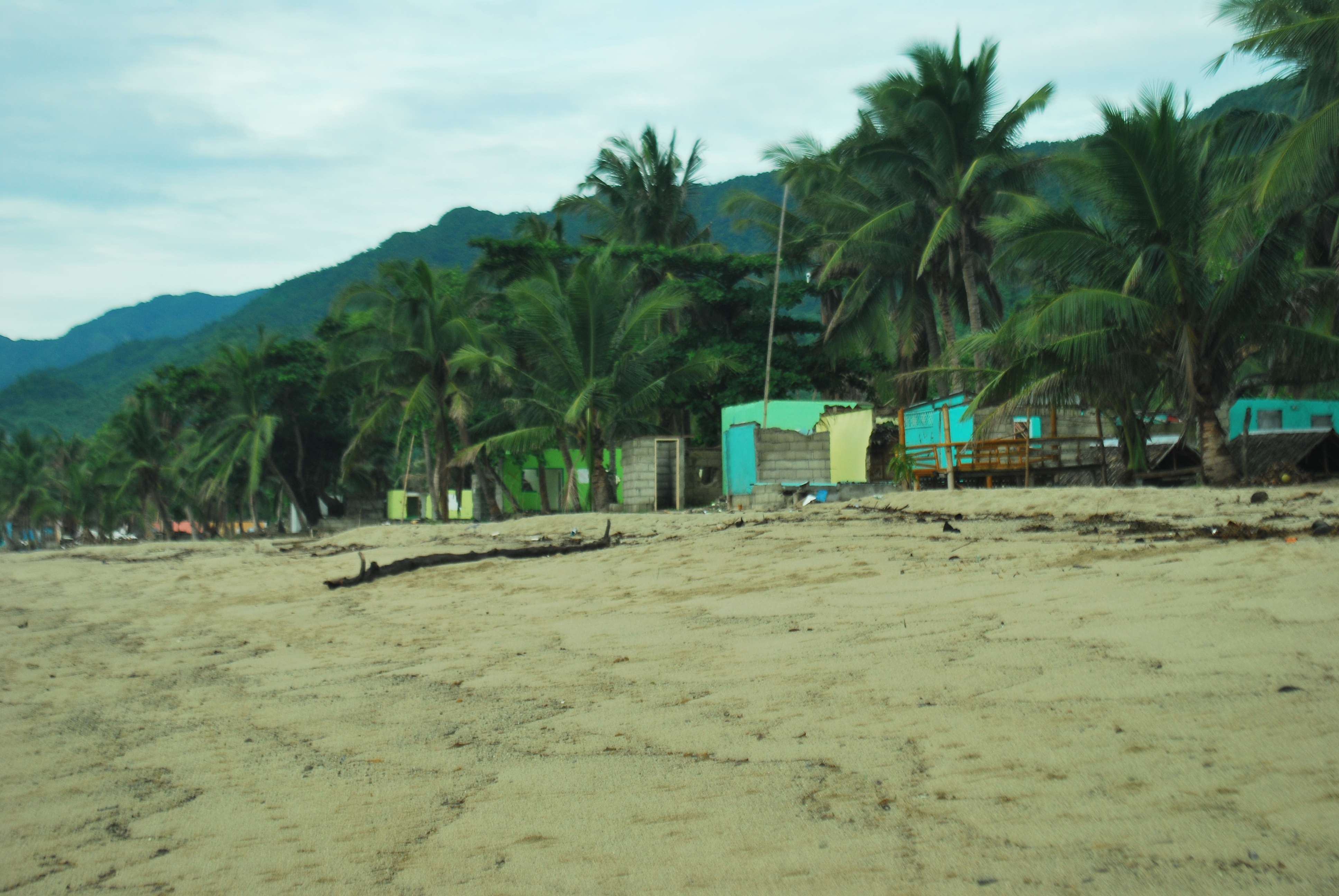
INITIAL REPORT
LAIYA NATIONAL FACT FINDING AND SOLIDARITY MISSION
October 11-13, 2014
San Juan, Batangas
Initiated by:
Haligi ng Batangenyong Anakdagat (HABAGAT)
Samahan ng mga Magbubukid ng Batangas (SAMBAT)
In Partnership and Cooperation with:
Pambansang Lakas ng Kilusang Mamamalakaya ng Pilipinas (PAMALAKAYA – Pilipinas)
Kilusang Magbubukid ng Pilipinas (KMP)
ANAKPAWIS PARTYLIST
Sentro Para sa Tunay na Repormang Agraryo (SENTRA)
Kalipunan ng Samahang Magbubukid sa Timog Katagalugan (KASAMA-TK)
Batangas Integrated Human Rights Advocates (BIHRA). HUSTISYA-Batangas.
KARAPATAN-Batangas. Kalipunan ng Damayang Mahihirap (KADAMAY)
GABRIELA-Batangas
with the participation of:
HON. FERNANDO HICAP
Representative
ANAKPAWIS PARTYLIST
- RATIONALE
On July 3, 2014, approximately 600 fisherfolks and peasant families lost their homes and livelihood following the demolition carried out by some 2000 police and more than 20 buses of demolition crews, using as its basis the “Special Court Order for Demolition” issued by the Rosario Regional Trial Court Branch 87 under Presiding Judge Rose Marie Austria, following almost two-decades long of land dispute and court battle.
The people were displaced by Mr. Federico Campos III, owner/representative of the Laiya Development Corporation and Macaria Development Corporation; who was about to develop the place for commercial resorts.
Ejectment cases were filed against the residents, including Unlawful Detainer and Forcible Entry charges that started since 1983 up to September 2013.
Campos offered a relocation site but majority of the affected families refused to accept citing primarily its distance from the sea on they mainly rely for a living, lack of security of tenure and flooding in the area during the rainy season.
Right after the demolition, the affected families re-organized themselves and collectively decided to stay in the area by building makeshift houses along the national road as most of them have no other place to go, and also to assert their right to livelihood and dignity. Some 264 families are still in the area and are vigilantly advancing their plight.
Various people’s organization in the province led by Haligi ng Batangenyong Anakdagat (HABAGAT), Samahang Magbubukid ng Batangas (SAMBAT), Batangas Integrated Human Rights Advocates (BIHRA) and KARAPATAN-Batangas immediately came to the area hours after the demolition on July 3 in response to the victims’ call for support to express solidarity and investigate the demolition incident.
SAMBAT and HABAGAT continues to help by facilitating dialogues with the local government units (LGU), provincial government and other concerned agencies to help bring the people’s demands to the attention of the authorities involved in the implementation of the demolition.
However, the need for a comprehensive investigation and study on the incident was strongly recommended to effectively address the people’s plight and come up with courses of actions that shall meet the actual needs and condition of the demolition victims.
Other organizations, individuals and institutions have also expressed support to the victims and willingness to help in bringing light to their current situation.
- THE LAIYA NATIONAL FACT FINDING AND SOLIDARITY MISSION
Objectives, Participants and Methodology
The Laiya National Fact Finding and Solidarity Mission had the following objectives:
- To forge unity among community people in their struggle for land and social justice;
- To gather facts and figures in the cost of injustices to the victims of Laiya Aplaya including farmers, fisher folks, women and children;
- To come up with a document on the impacts of Comprehensive Agrarian Reform Program with Extension (CARPER) and Laiya Tourism Development Program under the present framework of Public-Private Partnership Program of Aquino regime;
- To come up with a concrete and scientific analysis on the real impacts of so-called development projects to the people’s basic rights and welfare and be able to present it to implementing agencies and offices for immediate and proper actions;
- To come up with an education material that shall be used in analysis and critic of like-wise law and development program.
The said mission was initiated by Haligi ng Batangenyong Anakdagat (HABAGAT) and Samahang Magbubukid ng Batangas (SAMBAT) with national level partners including PAMALAKAYA-Pilipinas (Pambansang Lakas ng Mamamalakaya ng Pilipinas, Kilusang Magbubukid ng Pilipinas (KMP), ANAKPAWIS PARTYLIST and Sentro para sa Tunay na Repormang Agraryo (SENTRA), a group of people’s lawyer, researcher and paralegal. Kalipunan ng Samahang Magsasaka sa Timog Katagalugan (KASAMA TK) represented regional partners while local partners include Batangas Integrated Human Rights Advocates (BIHRA), HUSTISYA (Victims United for Justice) – Batangas Chapter, GABRIELA, KARAPATAN and Kalipunan ng Damayang Mahihirap (KADAMAY) provincial chapters.
Delegates, volunteers and facilitators of the mission came primarily from the initiating organizations, their local and national partners and other networks. They were also joined by People’s Solidarity and Education Tour (PSET), development workers from IBON International, National Network of Agrarian Reform Advocates (NNARA) Youth, and KABATAAN PARTYLIST-Southern Tagalog. The Missionary for the Sacred Heart (MSH) congregation also expressed their support by sending a message of solidarity and commitment to the people’s cause.
Also present were ANAKPAWIS PARTYLIST Rep. Fernando ‘Ka Pando’ Hicap and a representative from the office of BAYAN MUNA PARTYLIST Rep. Carlos Zarate to see possible congresional actions his office may take in response to the victims appeal. Atty. Buela, Legal Counsel to the Office of the Mayor also attended the first part of the mission and was able to share some viewpoints on the demolition incident, the eco-tourism project and other programs of the local government unit.
Alternative media correspondents were also present.
Serving as key informants to the surveys, discussions and interviews were some 200 demolition victims from Sitio Balakbakan, relocatees from Sitio Site, Campos Site, Kabayan Village of Brgy. Laiya Aplaya and Sitio Marulas and Sitio Encarbang of Brgy. Laiya Ibabao.
- SURVEY
The Fact Finding Team interviewed 40 people representing 15% of the demolition victims now currently residing on the sideways of the national road. Random sampling was used in the identification of the respondents and facilitation the survey interviews.
- FOCUS GROUP DISCUSSIONS
Focus Group Discussions (FGDs) were conducted in order to be able to address some questions which were not particularly covered by the survey including a comparative discussion on the situation of the community before and after the demolition; its specific impacts on the different sectors, health and psychological well being of the victims after the incident; and determination of their demands and call to the authorities.
- KEY INFORMANT INTERVIEWS
A more thorough gathering of first hand data and actual accounts of experiences through the Key Informant Interviews (KII) was also conducted among the leaders of the demolition victims, representative of different sectors in the community, local government unit and barangay council.
INITIAL FINDINGS
Majority of the demolition victims trace the history of their tenure as far back as over a hundred years ago, making them the third generation of residents to cultivate and develop the land into what it was before the demolition took place.
To the knowledge of the victims, no one really owns the land when their forefathers first occupied the area. Respondents between 40-50 of age attested that the place used to be a forested area covered with aroma trees. Ther parents were the ones who had cleared the area to be suitable for residential purposes.
Among the first settlers were the Gunay, Cantos, Andaya, Landicho, Valdez and Diaz families. When the place was already cleared, it was then that they first became aware of the Llana clan’s claim of land ownership and then sold it to a certain Elizalde, who during the Marcos regime, lost it through a bank foreclosure and back to the Llanas. They also recalled giving ‘tarasko’ or tax to a certain Pupula, for the coconut trees planted near the coastal area, who later on stopped collecting for reasons unknown to the people.
The first set of charges such as unlawful detainers and forcible entry against the people was filed by Margarita Llana Agtarap during the 1990s up to the present. Sometime in 1996, Federico Campos III first came in, whom the people knew then as the developer of the land when he called for a meeting with the people. But by year 2000, Federico Campos III was already claiming ownership and has been the one to represent the Laiya Development Corporation, formerly owned by Margarita Agtarap Llana and the Macaria Development Corporation (MDC) on the charges filed against them.
Majority of the people in the area are fisherfolks and are relying primarily on the sea for their source of living; aside from fishing, commissioning fish sale, renting small cottages or huts, sari-sari store, part-time labor on small cottages were among other sources of living.
Most of the fisherfolks families also farm crops for additional income and food source such as atis, banana and vegetables on the upland area also in Sitio Balacbacan. Most of them were either tenants or CARP (Comprehensive Agrarian Reform Program) beneficiaries. Those who are CARP beneficiaries were part of collective CLOAs (Certificate of Land Ownership Award); some have already paid for the full amortization while the others are almost near completion.
DRASTIC EFFECTS ON THE PEOPLE’S LIVELIHOOD
Prior to the demolition, there are five (5) ‘pangulong’ owned by different individuals who were also victims of the demolition; about one hundred fifty (150) bangkang de motor and five ‘bangkang sagwanan.’
Each ‘bangkang pangulong’ can employ 30-40 fishermen. On a favorable season, each fishing vessel can operate everyday which sometimes lasted for weeks and were able to catch up to 50 coolers of fish; with this catch, they were able to divide up to an average of 20 kilograms per person or Php3000.00 – Php6000 worth of net income per person. On a normal basis, a regular fishermen usually earned Php300-Php500. During bad weather or worst catch, each one still gets a share just enough for their families food consumption.
But when Federico Campos III came and started claiming ownership, right after he was able to establish his Virgin Resort on the nearby area, the situation started getting tough for the fisherfolks of Balacbacan. Livelihood actvities were restricted and fisherfolks experience threat, harassment and intimidation from the hands of the security guards, private goons and Federico Campos III himself.
Fisherfolks are not allowed to dock, or even get nearby the compound of the Virgin Resort; whenever someone unconsciously get nearby, they were being shot at by Campos’ security guards and private goons. Even vendors are not allowed to pass by in front of it, even though they are on the shore area which is still considered public domain.
Small cottage owners were being harassed; their videoke were being fired at; and by 2013, Campos ordered the collection of Php20.00 per guest on the small cottages owned by some of the victims and even from the victims themselves, aside from the parking fee for their guests which amounts to about Php150minimum depending upon the vehicle. The collection was authomatically done on the ‘boom’ or gate set up on the four (4) entrances to Sitio Balakbakan. The Php20.00 per guest collected by the security guards in Campos’ order is still different from the ecological fee being collected by the municipal government per guest/tourist; so the guests instead turn to other resorts or the Virgin Resort, instead of renting the victims’ cottages.
EFFECTS ON WOMEN AND CHILDREN
The demolition that took place on July 3, 2014 has caused severe trauma, emotional and psychological baggage to women and children. The children are often crying, asking their mother when they will be going back to their houses. Some children showed manifestation of post-traumatic stress disorder ranging from extreme fear and anger from what they have personally witnessed and experience.
Even the children’s studies were affected. Due to the loss of livelihood, most children experienced being absent from their classes as their parents could no longer support for their day-to-day expenses.
Most women in the community who used to earn extra money aside from their husband’s job, also loss their income after the demolition. Some elderly women also showed manifestation of trauma.
HUMAN RIGHTS VIOLATIONS
Even before the demolition, the residents reported that they had long been experiencing different forms of threat, harasment and intimidation from the hands of the security guards and private goons employed by Federico Campos III and from Campos himself.
On the morning of June 11, the day when the local government called for a Pre-Demolition Conference, Wilfredo ‘Pasot’ Cuerdo, a local leader was gunned down in Brgy. Abung, San Juan, Batangas while riding his jeep to Dalahican to deliver fish catch.
The residents have been filled with fear and tension; their livelihood activities and normal lives were restricted.
On the actual day of demolition, the massive deployment of police, SWAT and demolition crews brought about severe trauma and intimidation to the people; they have personally witnessed the policemen leading the demolition by barging into the fences of each houses in order to give way for the demolition crew; the guns pointed at them while their houses are being crushed. They also recalled seeing a machine gun in the shore area on the morning of July 3.
Days after the demolition, the affected families who have temporarily sought refuge on the other side of the road were still harassed by Federico Campos and his security guards; claiming he owns the entire Balacbacan.
INTERVENTION OF THE LOCAL GOVERNMENT UNIT AND OTHER CONCERNED AGENCIES
All those interviewed said that none of the local government units – from the barangay up to the governor – responded to the appeals of the residents, except for the people’s organizations such as SAMBAT and HABAGAT. There had not been any substantial consultation between the residents, the developer and the local government unit has happened to effectively resolve the conflict.
The demands raised by the people during May or June 2012 dialogue with the National Houseing Authority (NHA) was not substantially address before the demolition was carried out. On the said meeting, the people primarily brought up the issue of possible loss of livelihood when the demolition was carried out; pointing in particular to resolve the issue of right of way (ROW) and docking area. But even after the demolition, no concrete actions have taken place. Instead, Federico Campos III secured the entire area with barbed wire and fences and does not allow anyone to pass through the area.
The people brought up their appeal to the local and provincial government but were told that there’s nothing they could do, leaving their fate entirely to Campos and his armed men.
Until now, negotiations with the local government, the Office of the Provincial Governor and other agencies such as the Department of Agrarian Reform (DAR) and Department of Environment an Natural Resources (DENR) have not yet yielded any positive result in relation to the people’s demands.
OTHER OBSERVATIONS
During the Fact Finding Mission, the national delegates and group of volunteers attempted to swim in the sea and pass by in front of the area where they used to occupy but the security guards apprehended them citing orders from Federico Campos III. This only validated that even the sea is being deprived from the people.
The team also tried to talk to Federico Campos III by visiting him in his Virgin Resort but the security guards said Mr. Campos is too busy to accommodate the team and has to set first for a separate date of appointment.
The team also visited the KABAYAN Village, the relocation site offered to the displaced families of Sitio Balacbacan which the majority refused; but the delegates were stopped at the gate by the security guards of Tri-Force Agency employed by the Macaria Development Corporation and has took time before they were allowed to pass through.
CONCLUSION AND ANALYSIS
The demolition that took place in Sitio Balacbacan is violent and unjust; even though it may be called ‘legal’ by virtue of a court order. Land grabbing, manipulation and deception happened in the acquisition of lands by landlords and private developers that led to the eviction of the 600 families. The basic fundamental rights to land and life were clearly violated.
The people of Sitio Balakbakan, Brgy. Laiya Aplaya were among the victims of an imbalance development framework where only the rich and the few in power can benefit; leaving behind the majority in a more miserable condition brought about by dislocation to their lands and livelihood.
Laiya is known as the Boracay of Batangas for its beauty and white sand beach. For a long period of time, the sea has provided sufficient source of livelihood to fisherfolks sectors. However, the centerpiece program of the national and local government that aims to develop the beaches of Laiya as priority eco-tourism zone has sacrificed the rights and welfare of the people in order to pave way to profit and interests of private developers and landlords.
Since former president Ferdinand Marcos declared Presidential Proclamation 1801; all coastal areas of Batangas were subjected to eco-tourism plan accordingly, to boost economic activities in the province.
Under the administration of former Pres. Corazon Aquino, the CALABARZON PROJECT was introduced and implemented, as a master development framework in the Southern Tagalog region.
The CALABARZON Project highlighted seven main programs; among which is eco-tourism, thereby subjecting more agricultural and coastal lands to conversion for private development projects.
The development and conversion of Laiya’s coastal areas happened even though as early as 1989, the national government has already incorporated Laiya lands in centerpiece Comprehensive Agrarian Reform Program (CARP) through Complulsory Acquisition, including the 700 hectares claimed land properties of the Llana c lan, among the biggest landlords in the municipality of San Juan which were declared by the Department of Agrarian Reform (DAR) for distribution to farmers- beneficiaries.
In the 25 years of CARP implementation, massive conversion of agricultural and coastal lands in Brgy. Laiya Aplaya and Ibabao and the municipality of San Juan were being done. In the guise of eco-tourism, costal lands were privatized and subjected to ownership claims of various private development corporations such as the Aplaya Laiya Corporation (ALC) and LandCo Pacipic Corporation, both owned and represented by the Llana Clan, Active Group Incorporated, Hennessy Corporation and Macaria Development Corporation and Laiya Development Corporation, owned and represented by Federico Campos III.
The entire coastal area of Laiya were subdivided among these corporations for community-residential beach resort development.
The Laiya Tourism Development Area has driven out almost 60-70% local family residents of fisherfolks and peasant sector in Sitio Balacbacan. The so-called ‘development program’ has evicted the people through land use conversions of vast residential lands where the primary sources of livelihood are fishing and farming.
A continuing scheme of land use conversion is being carried out even on nearby barangay, Laiya Ibabao for the development of Treasure Island Beach Resorts owned by another private corporation, Henessy Corporation.
The role of the local government in this development program is limited only to access assistance, waste management, facilitation of permits etc. The government earns from taxes, fees generated from securing permits and the ecological fee that amounts to Php20.00 per tourist. But there is no clear program to address and minimize the drastic effects on the socio-cultural and economic and political effects of the development projects, uplift the condition of the victims of eviction and demolitions and protect its people from further dislocation.
At present, the displaced fisherfolks of Sitio Balacbacan have to walk a long distance in order to get to the sea; and the incidents of threat, harassment and intimidations perpetrated by the private security guards and goons of Federico Campos III and other developers have not yet been addressed.
The National Fact Finding and Solidarity Mission Team maintain that we do not wish to hinder development – but a sincere and comprehensive study of a pro-people development framework must be done in order to ensure that the rights and welfare of the people will not be sacrificed for the profit of only a few corporations and individuals.
RECOMMENDATIONS
- For relevant government units to immediately address the grievances of the victims of demolition in Sitio Balacbacan, Brgy. Laiya Aplaya, San Juan, Batangas that were put forth during their July 7 dialogue with the LGU:
- to immediately stop and protect the people from human rights violations in the hands of the security guards, private goons and state armed forces.
- Bring back the people to their original settlement
- Bring back the people’s main source of livelihood and guarantee free access to the sea.
- Investigate and penalize the perpetrators of the human rights violations experienced by the victims of demolitions
- Provide substantial social services to the victims of the demolition in Sitio Balacbacan, Brgy. Laiya Aplaya, San Juan, Batangas without pre-conditions or compromise on the people’s legitimate demands.
- to conduct a comprehensive study and public consultation on the Laiya Tourism Development Plan and the impact of the eco-tourism development projects in the municipality of San Juan
- to create an appropriate body to investigate, monitor and address the impacts of other development projects in the municipality of San Juan
- to develop mechanisms to protect the fishing and farming industry as the main source of livelihood of the people of San Juan.#
photos by: PSET and Ibon International


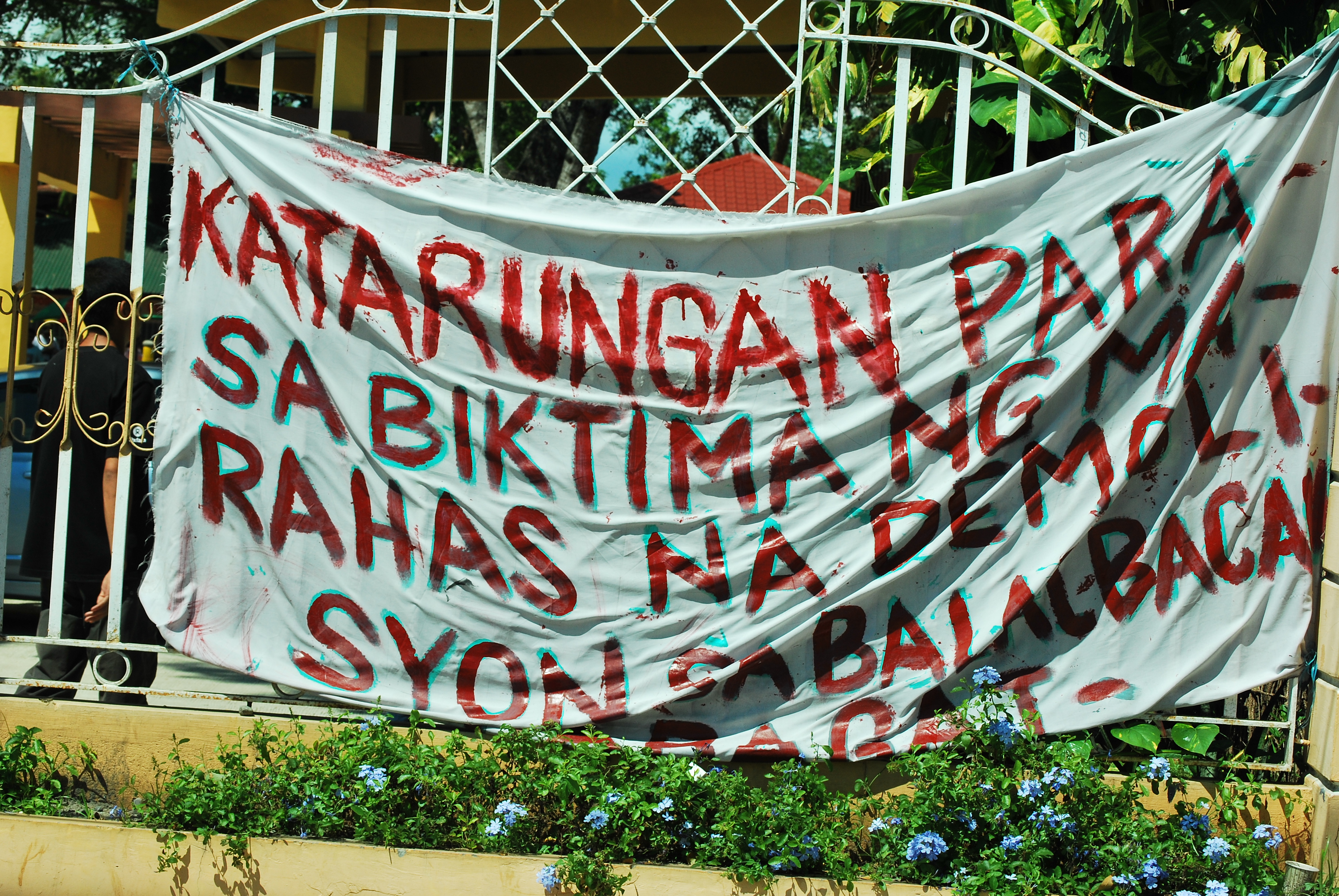
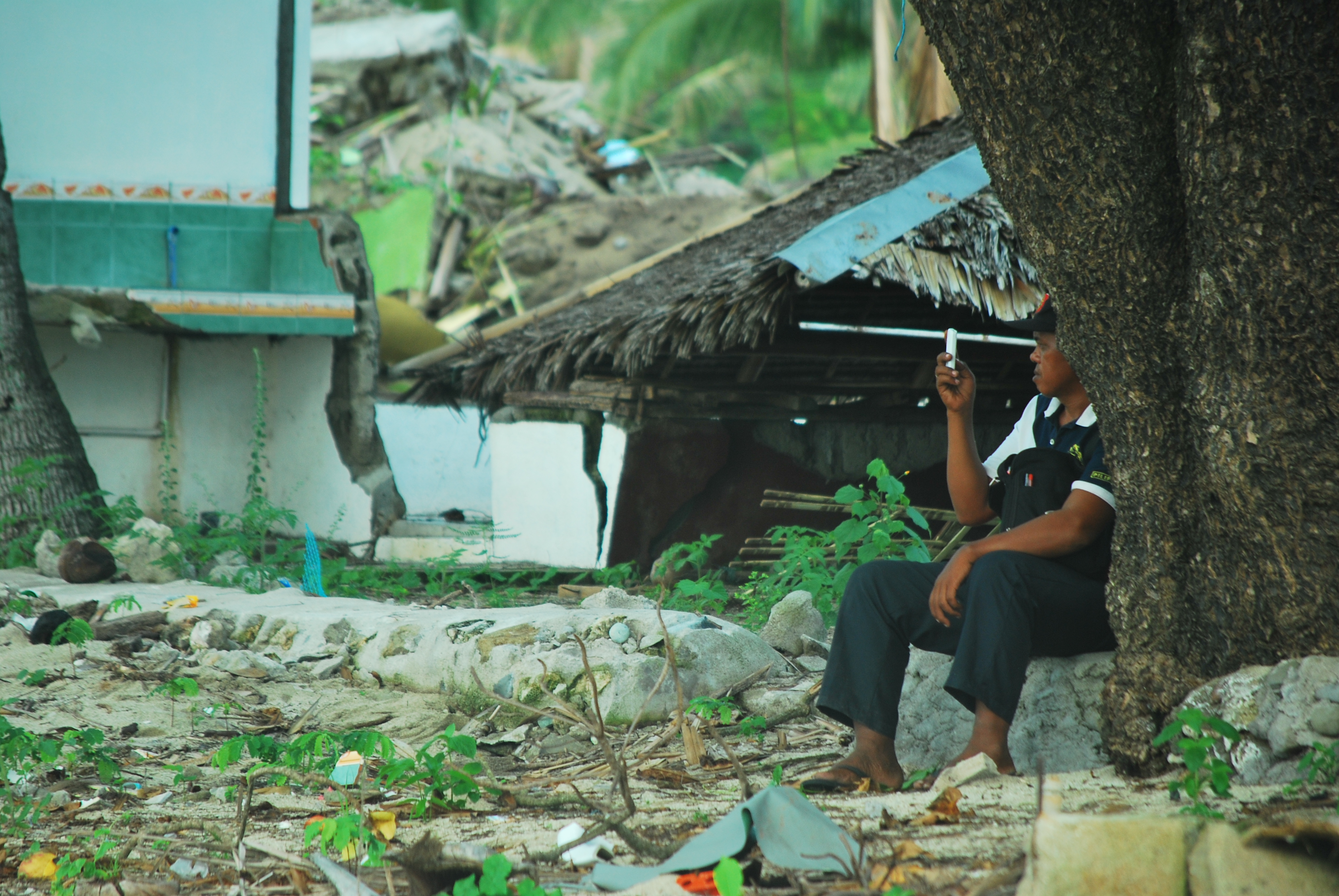



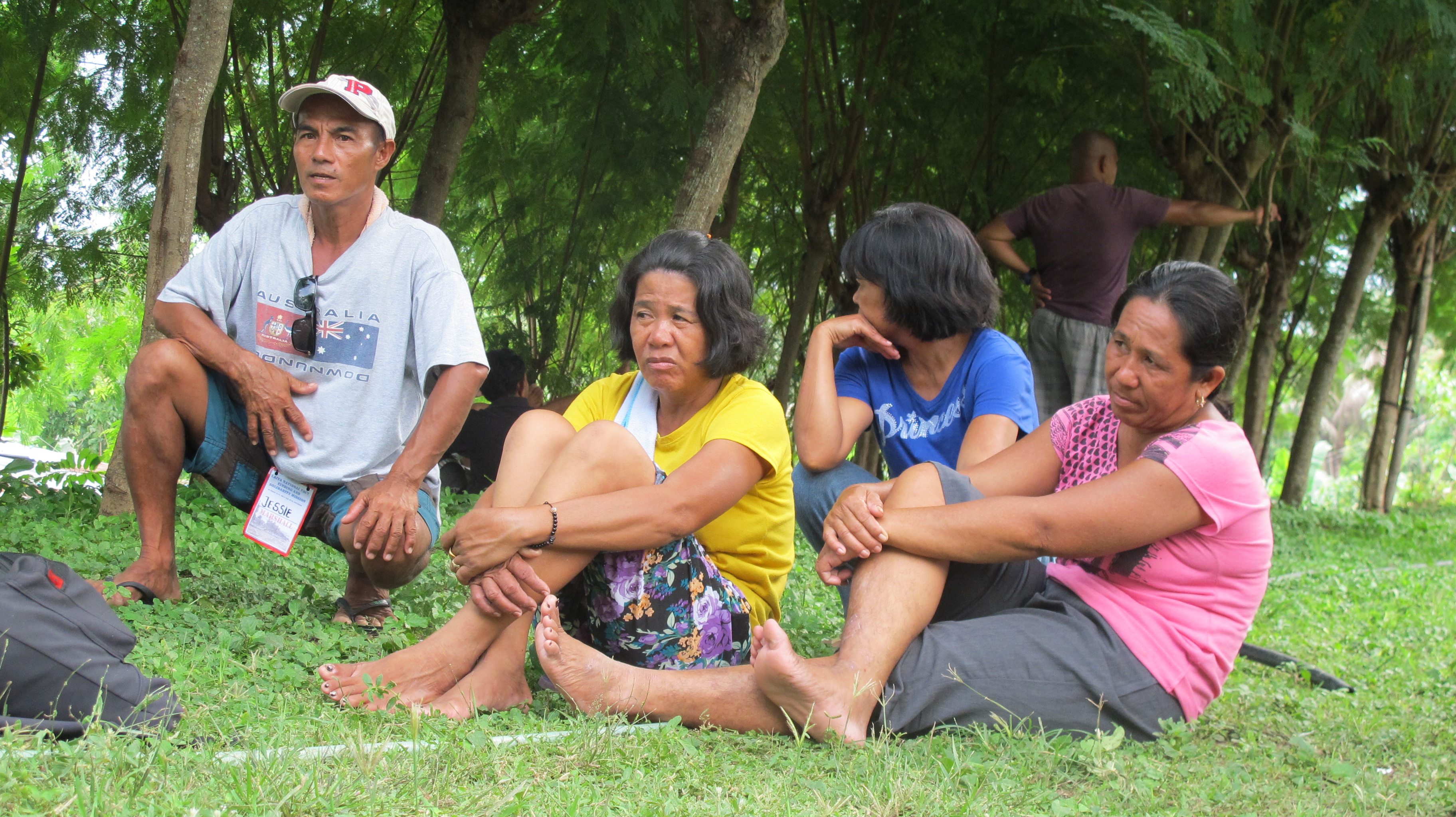
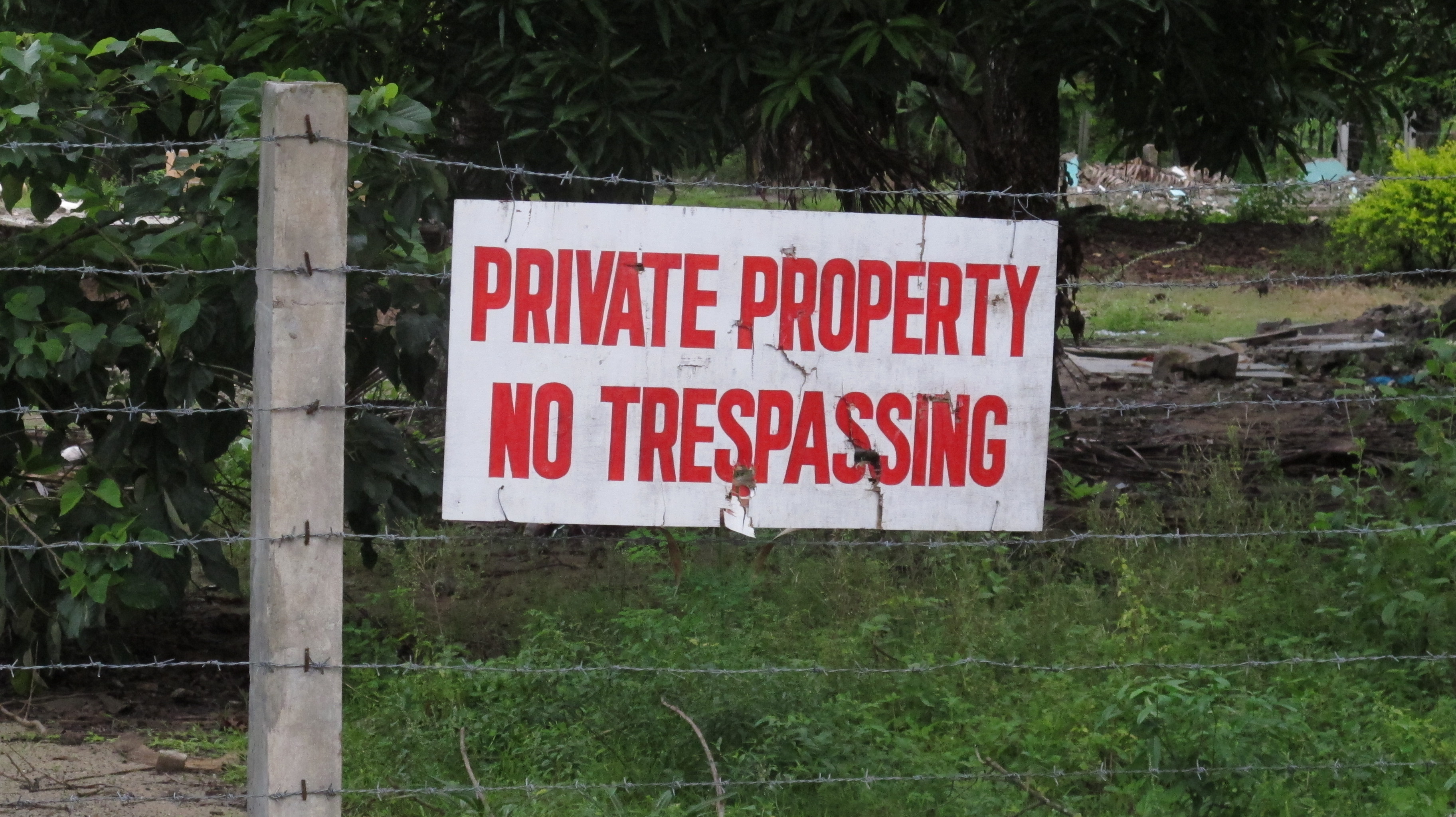
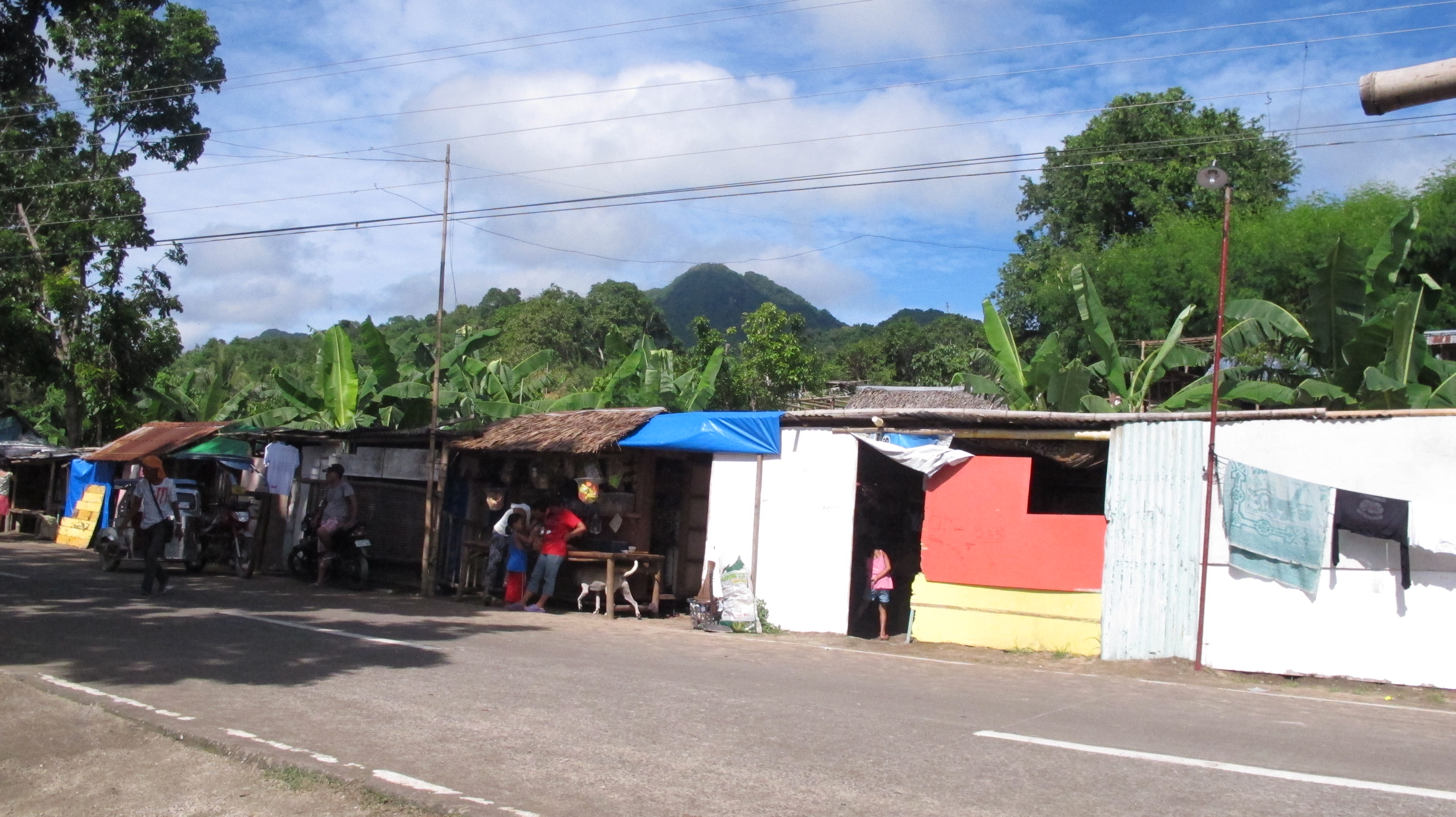
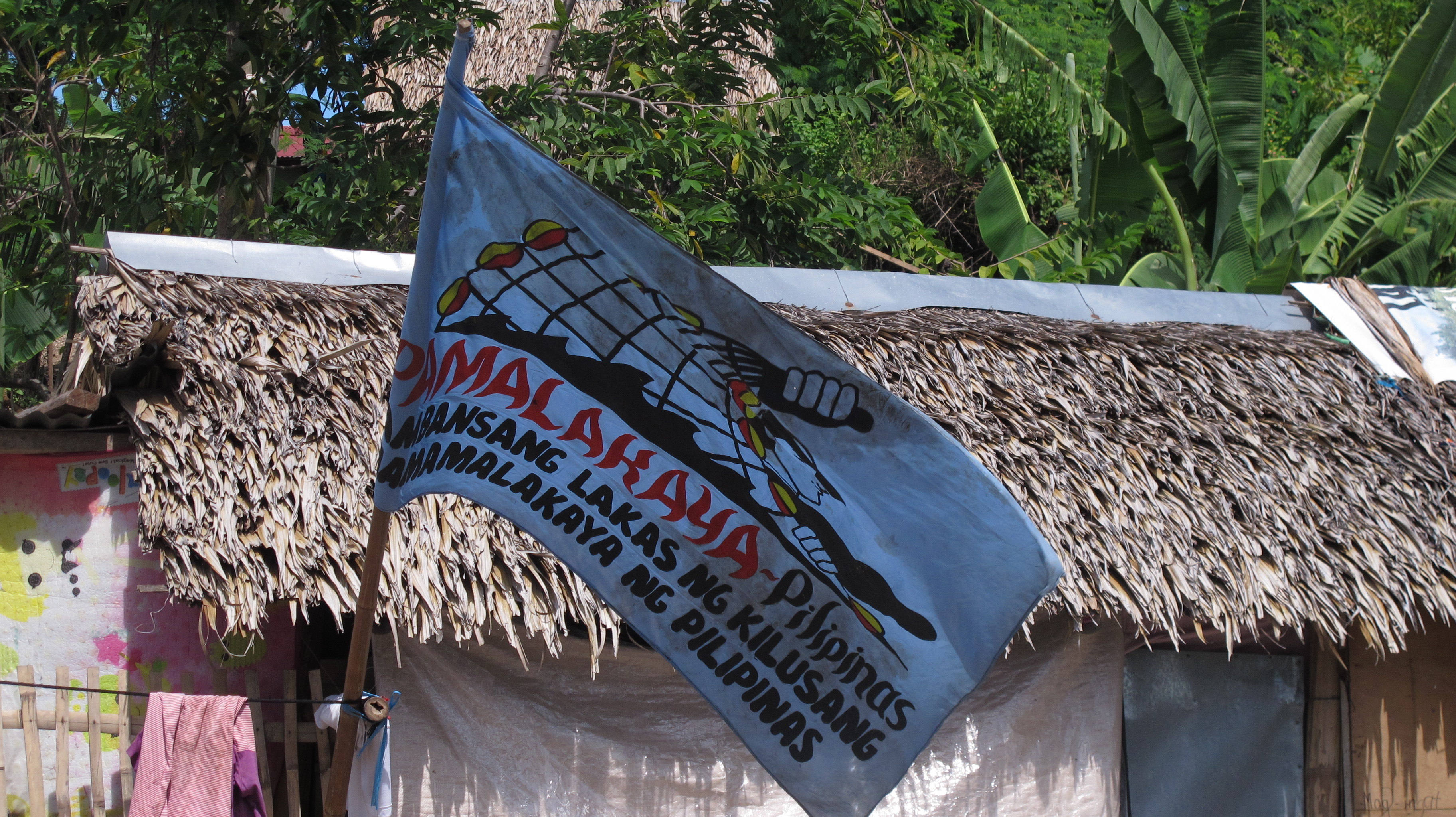
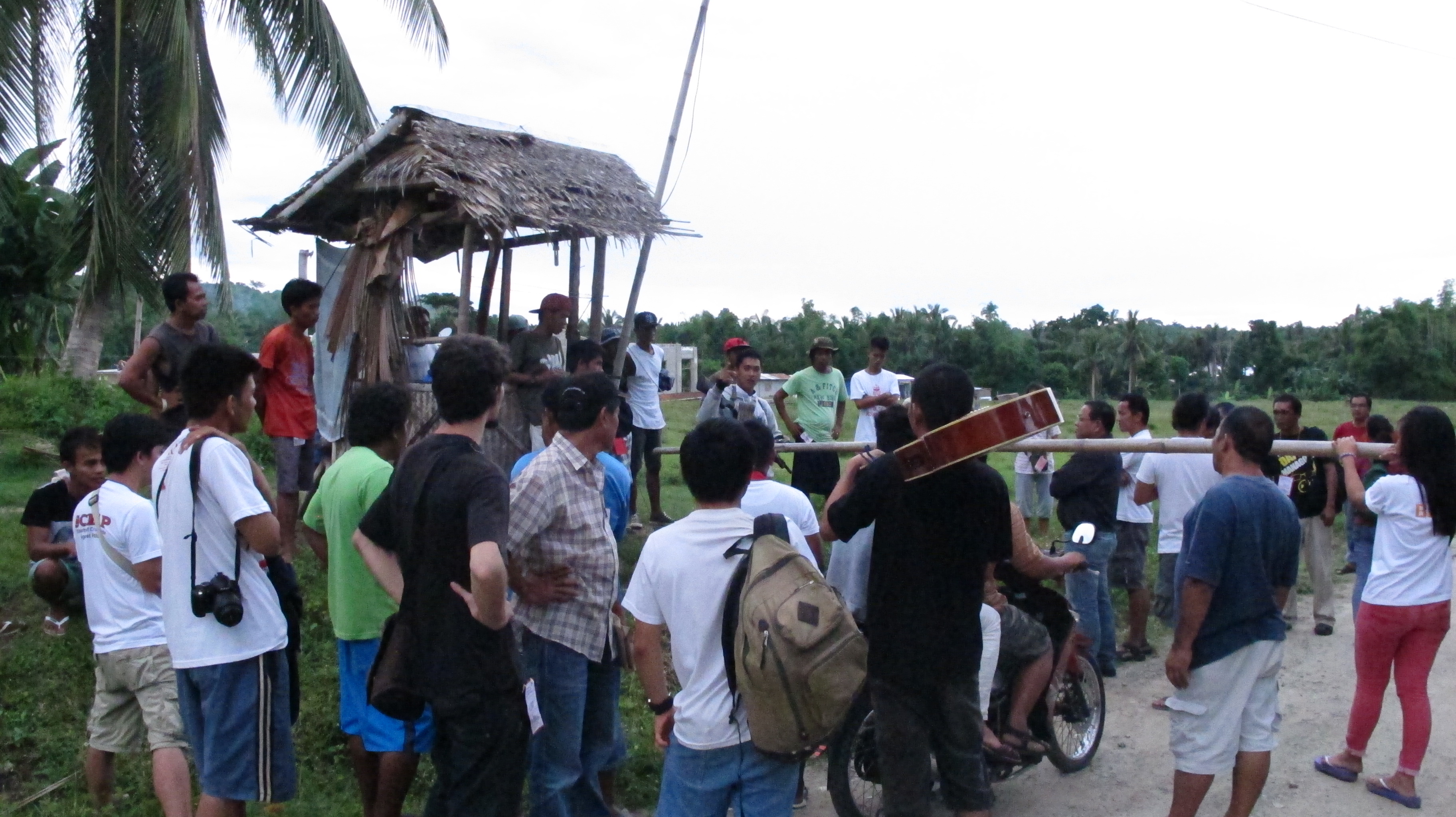
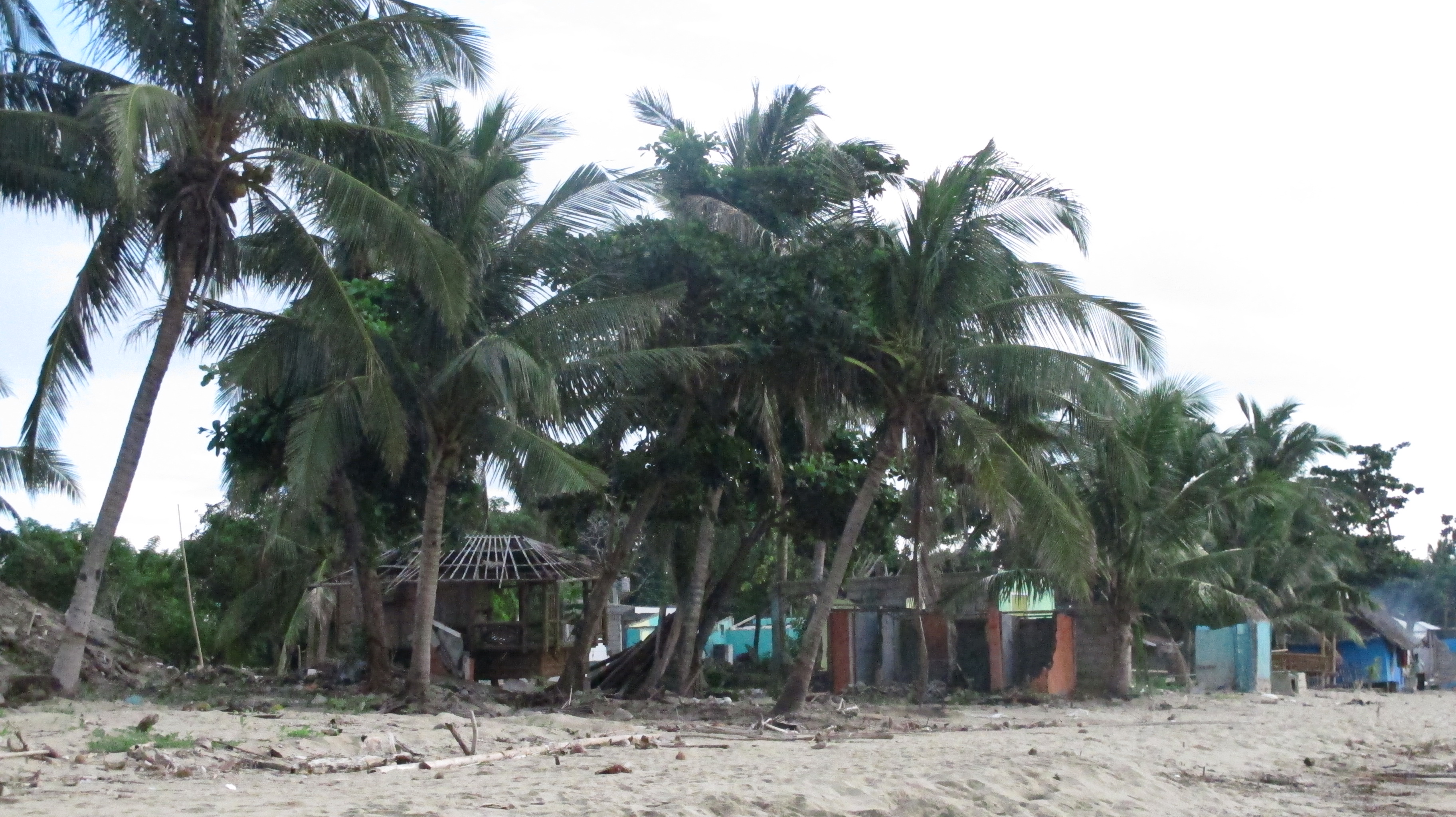
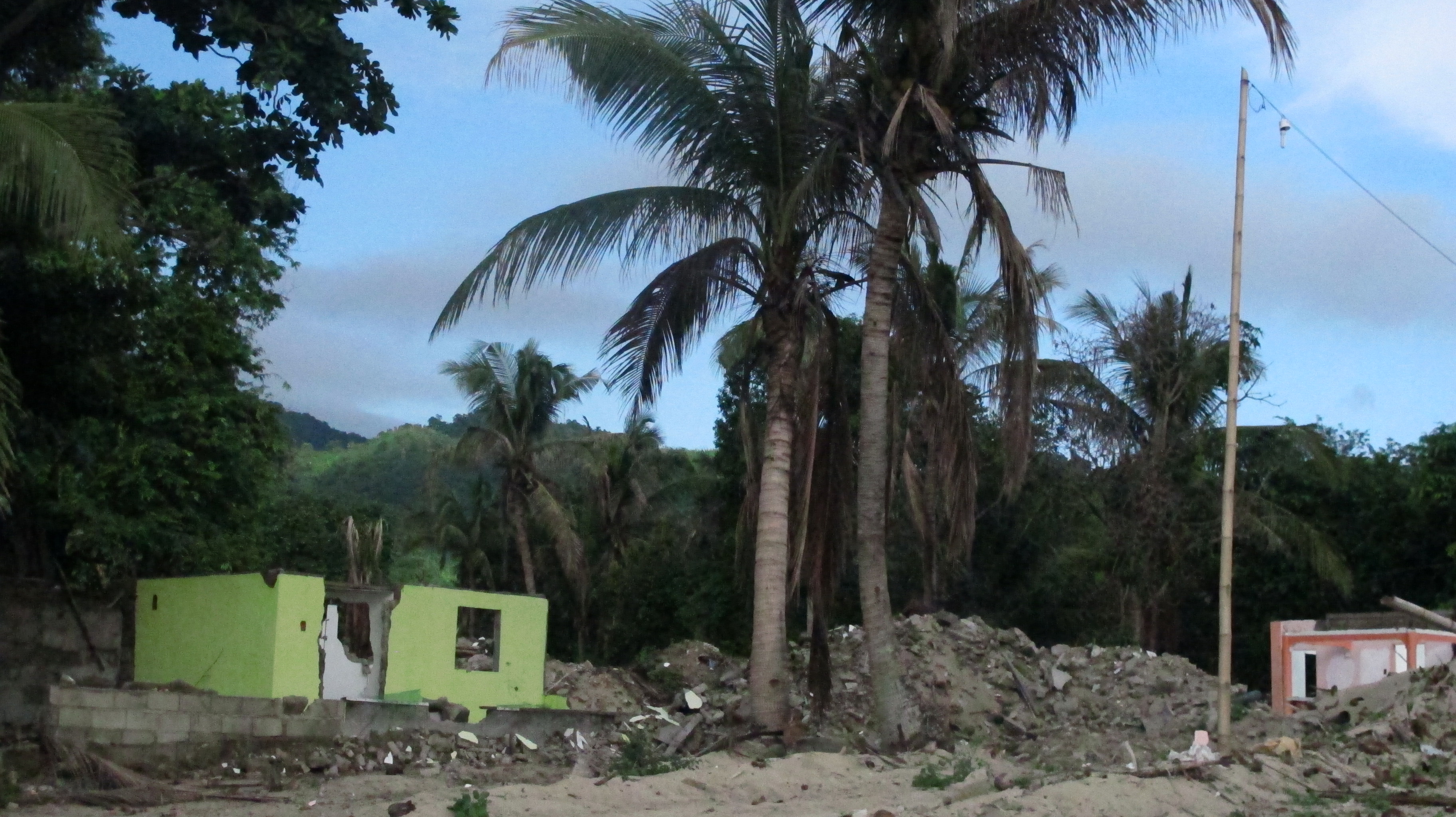
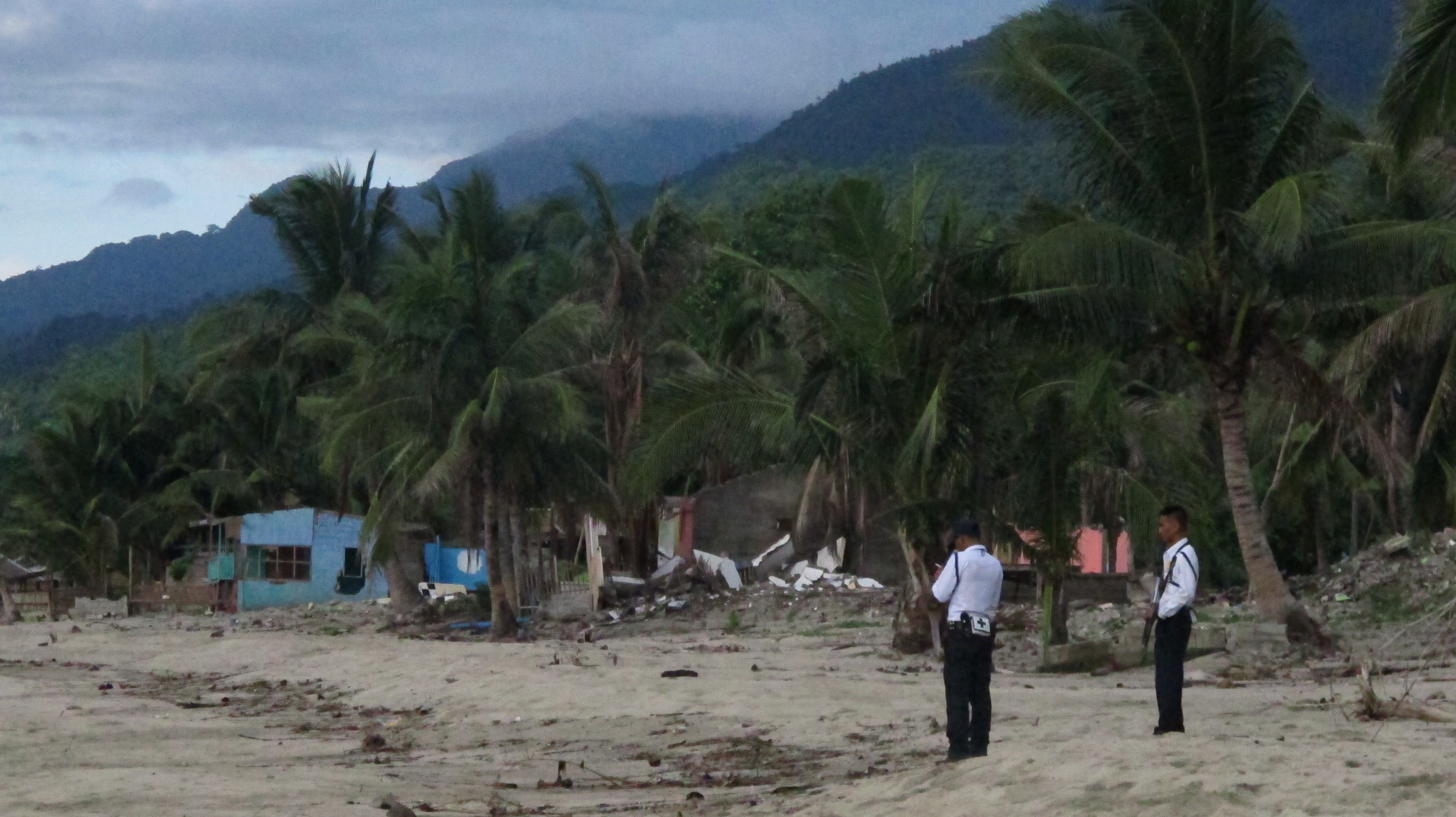
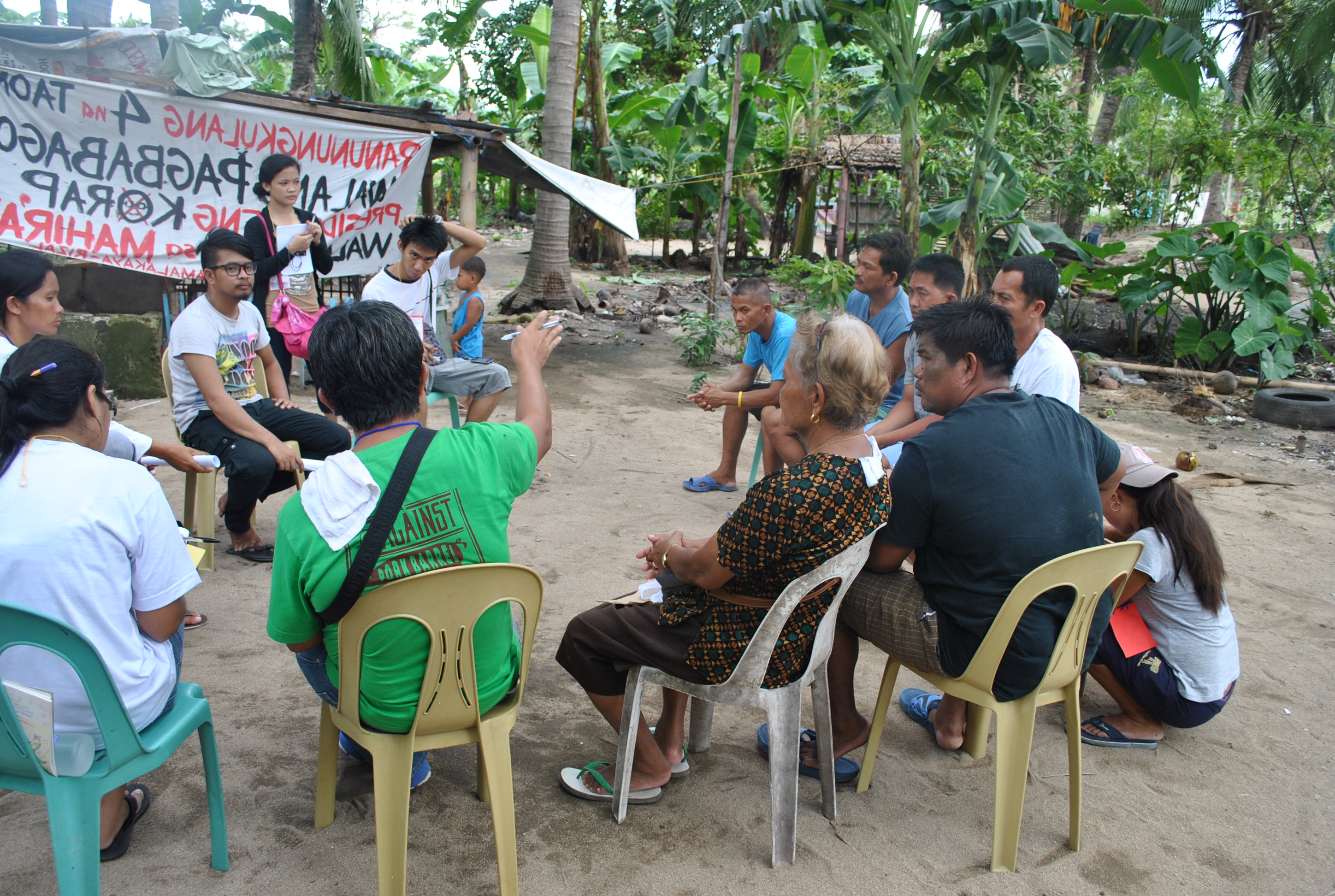
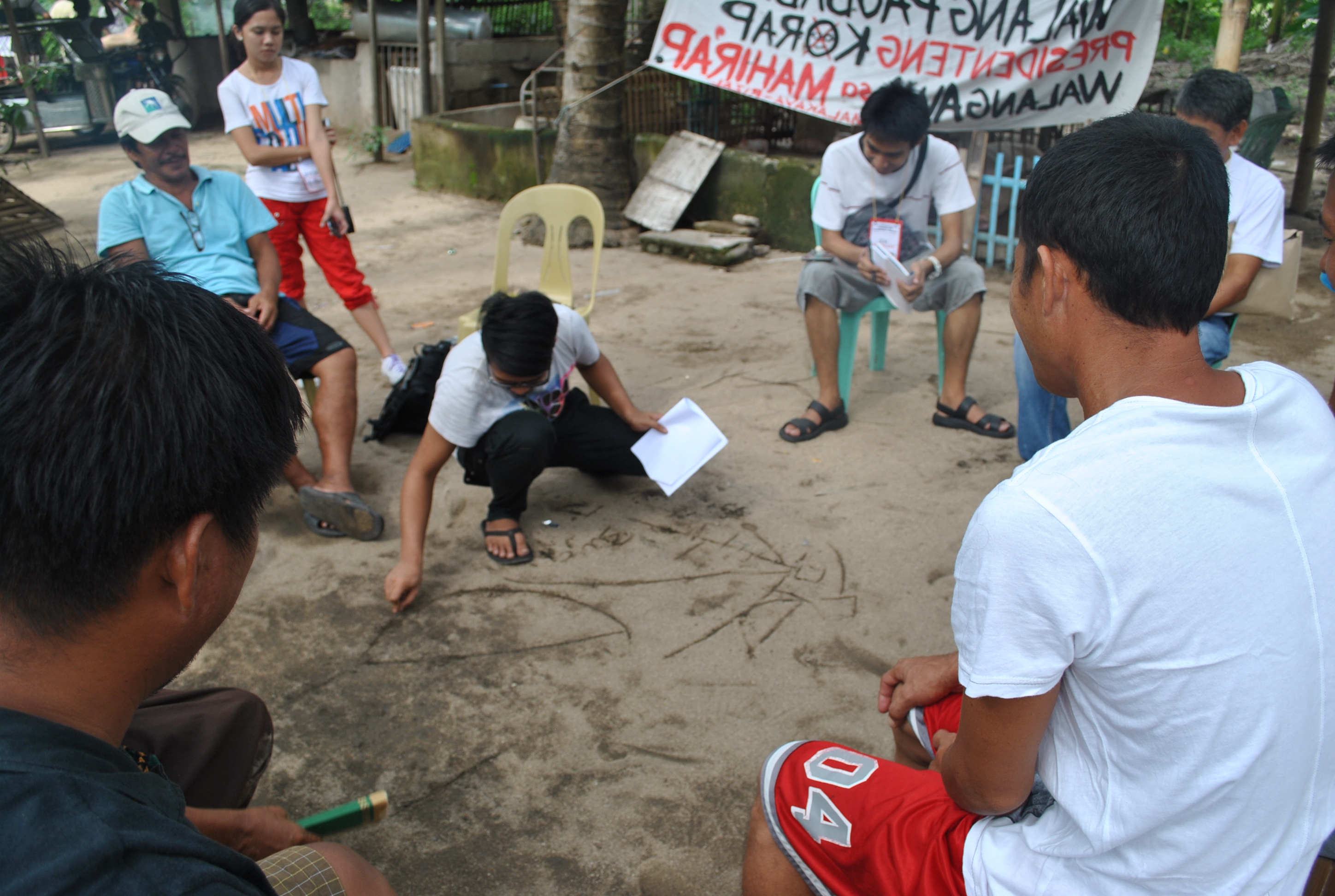
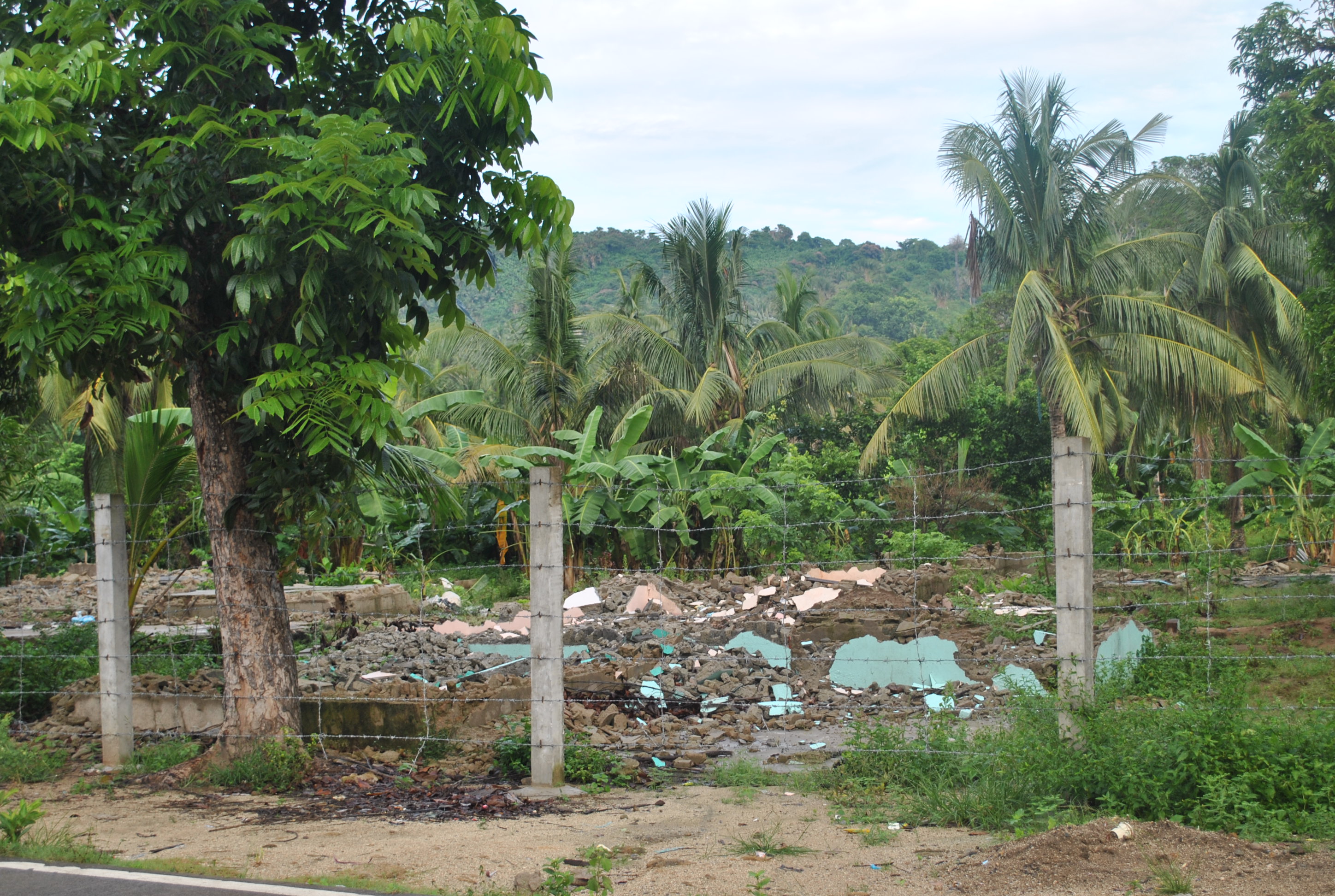


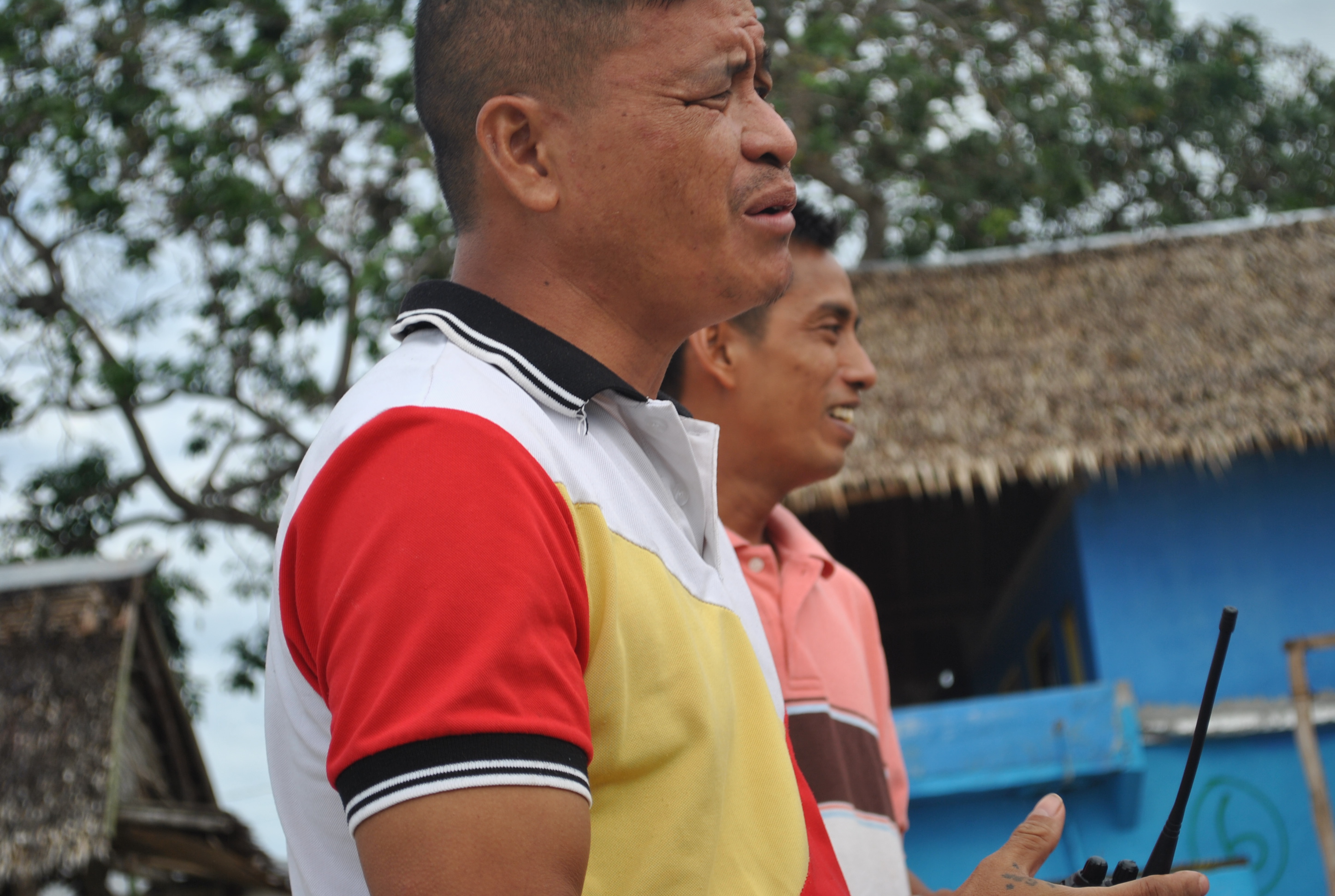

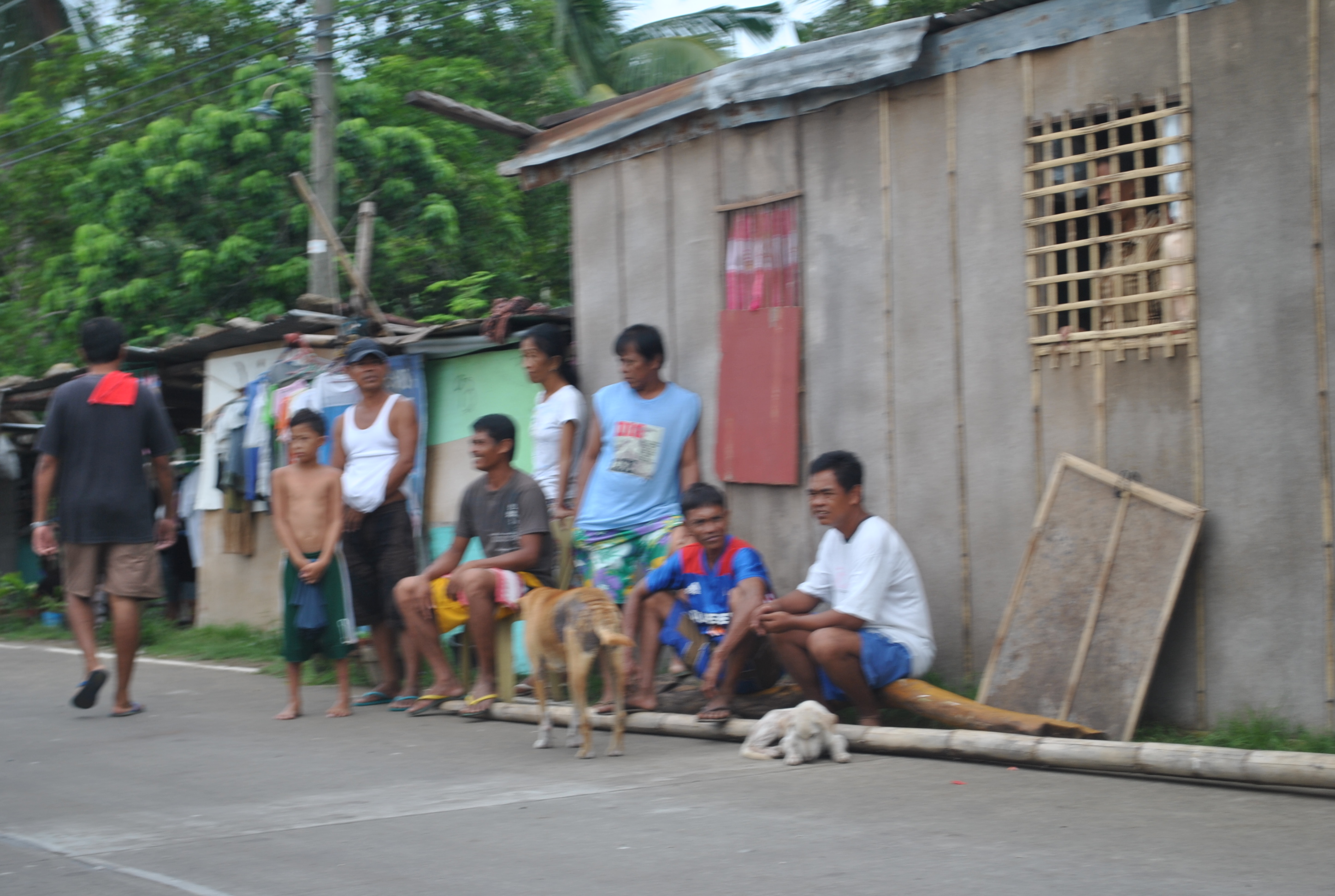
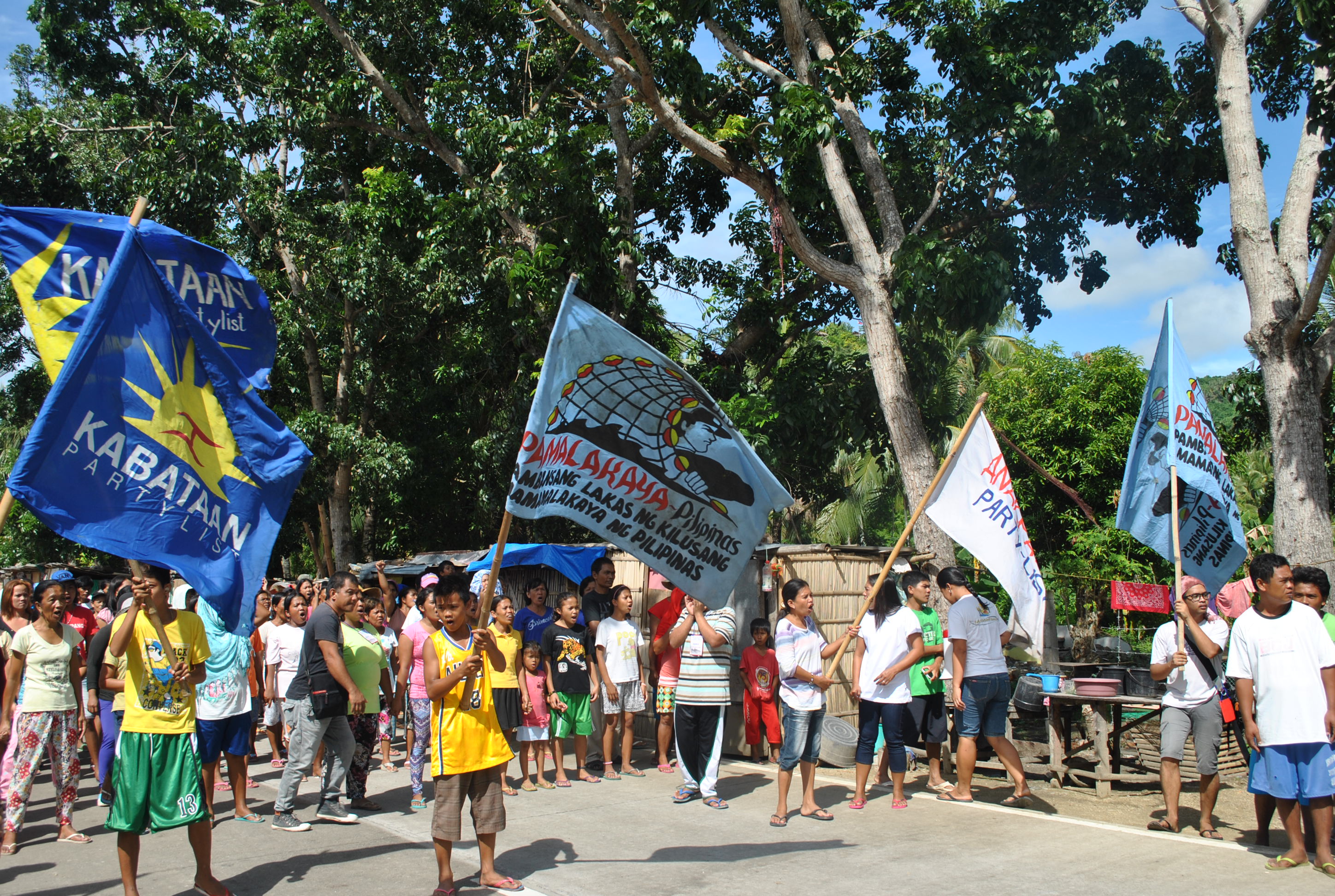
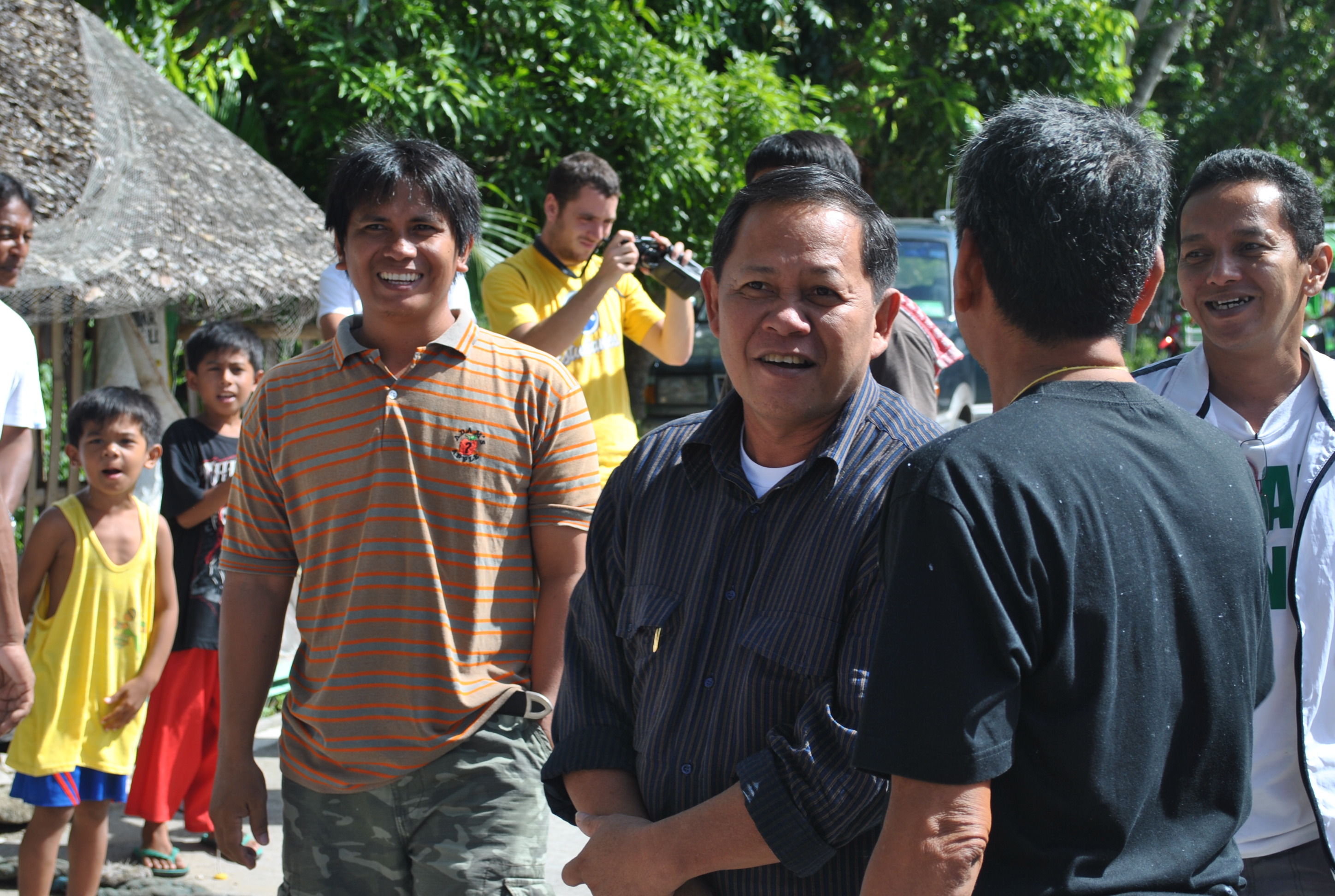

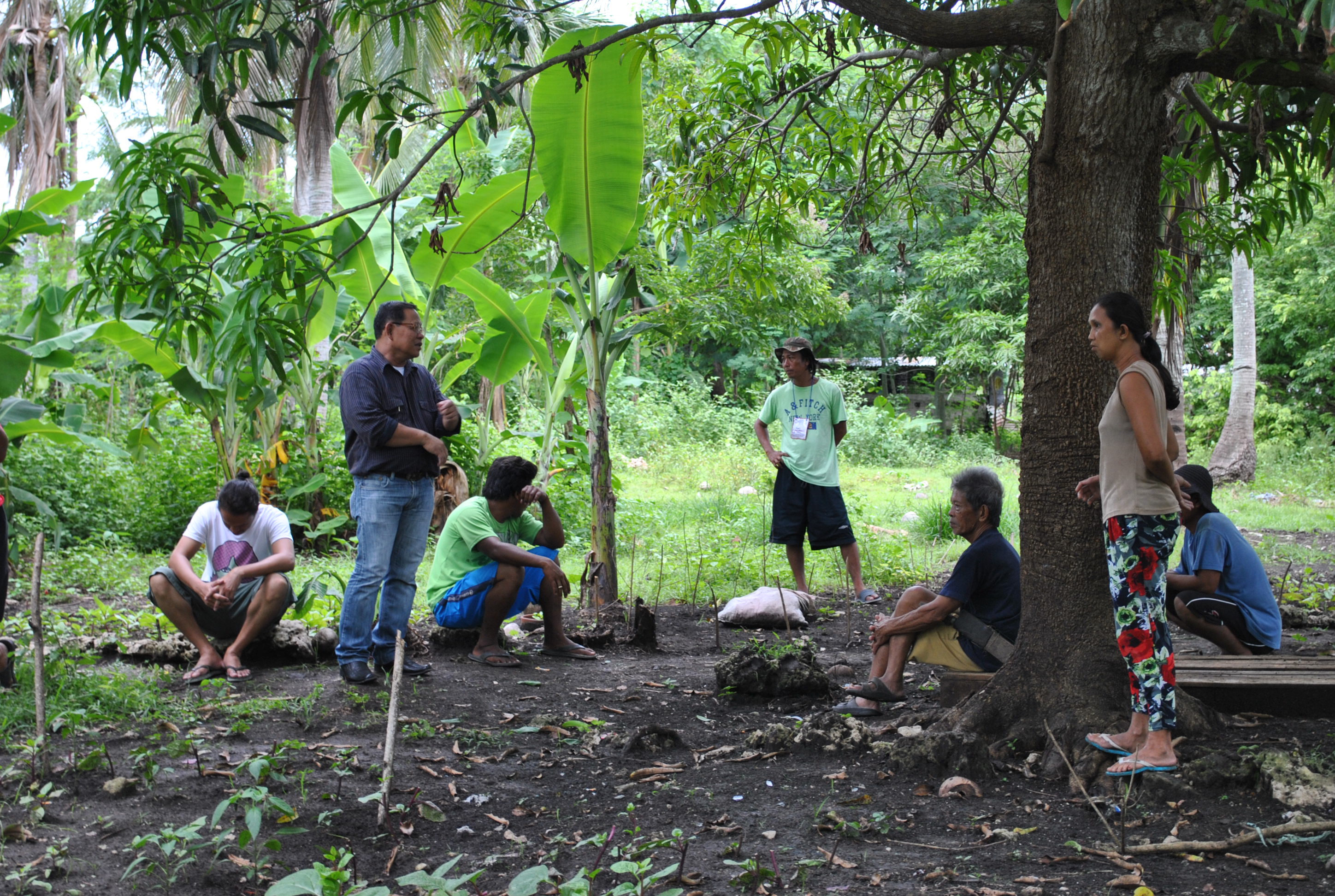

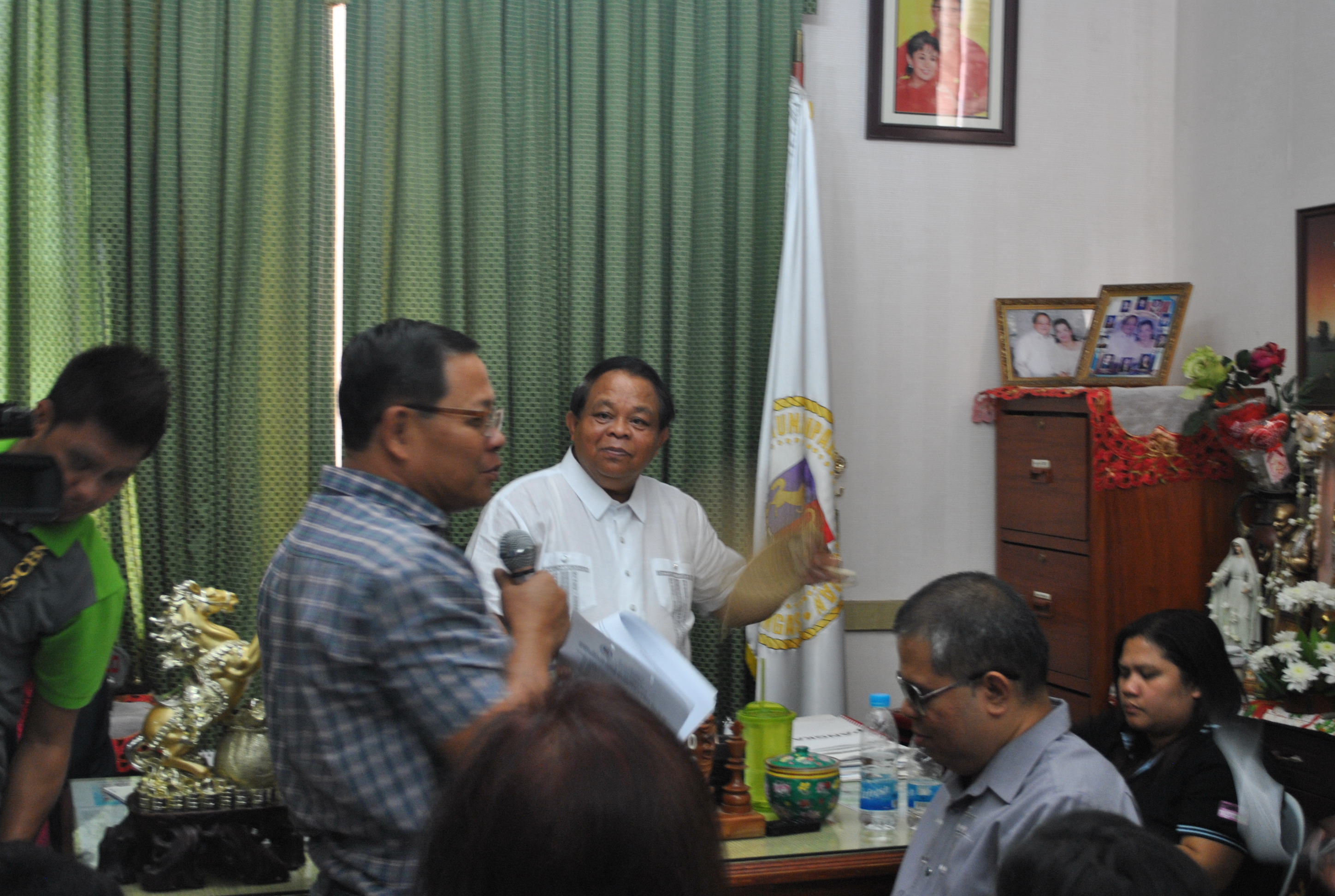
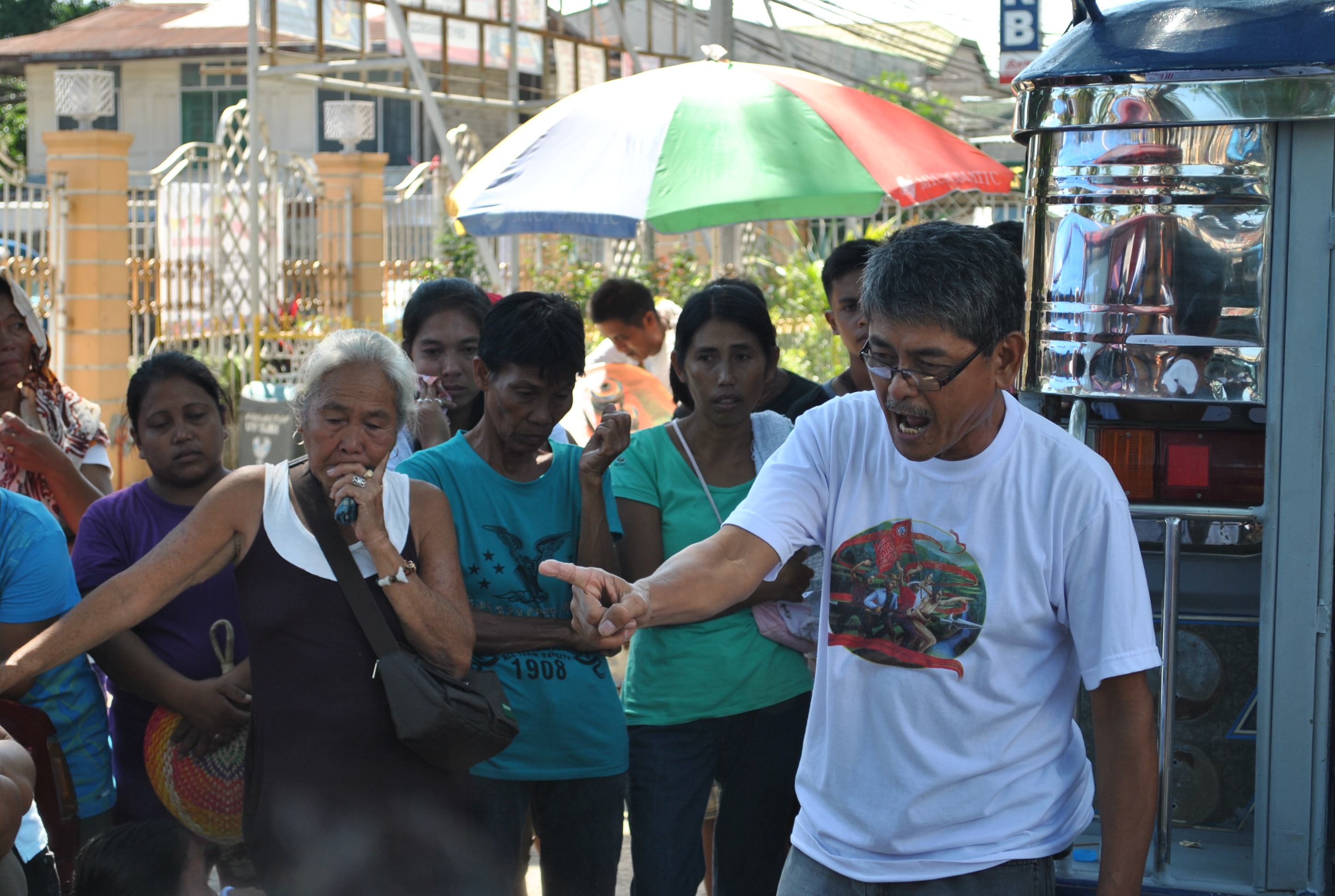
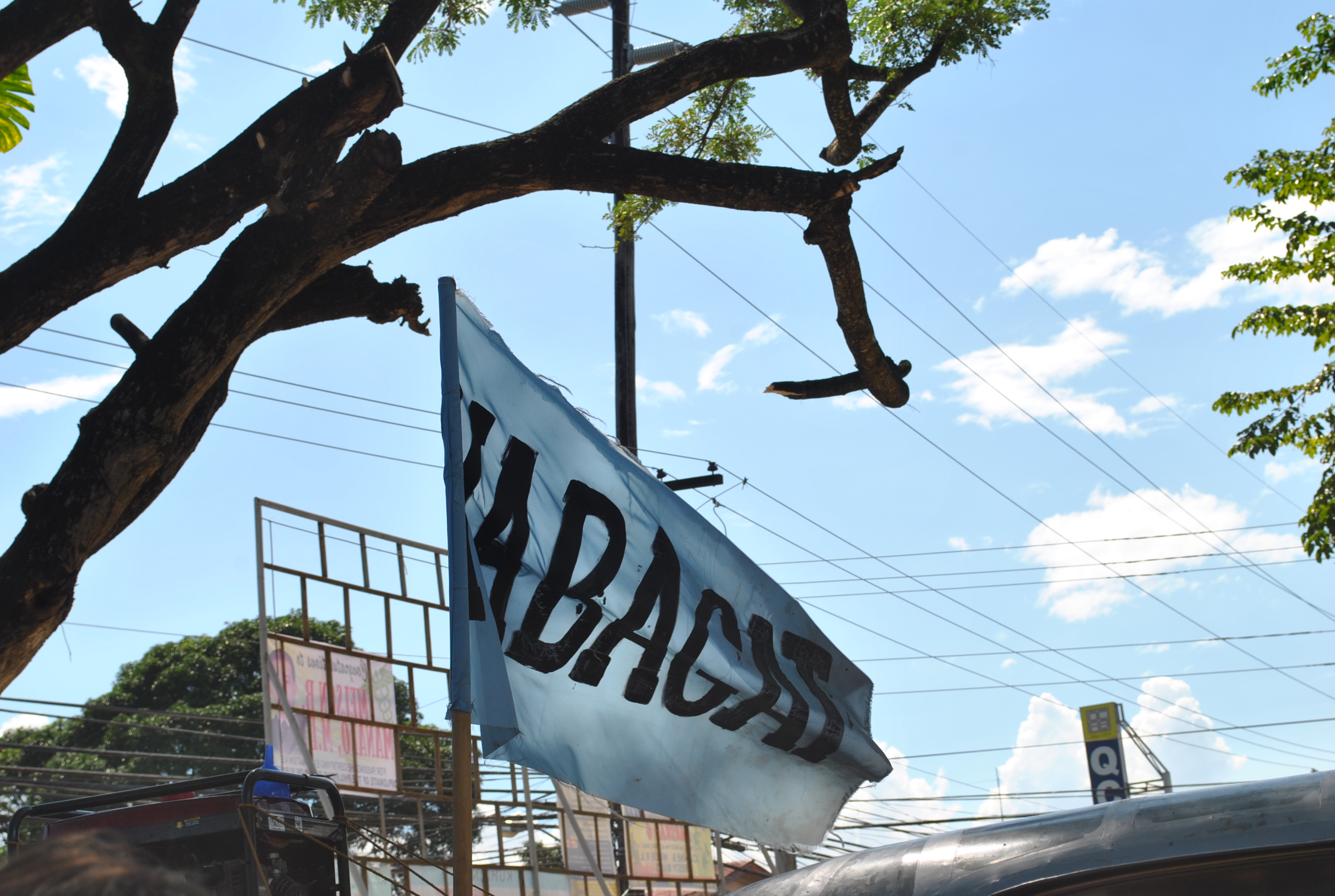
One comment